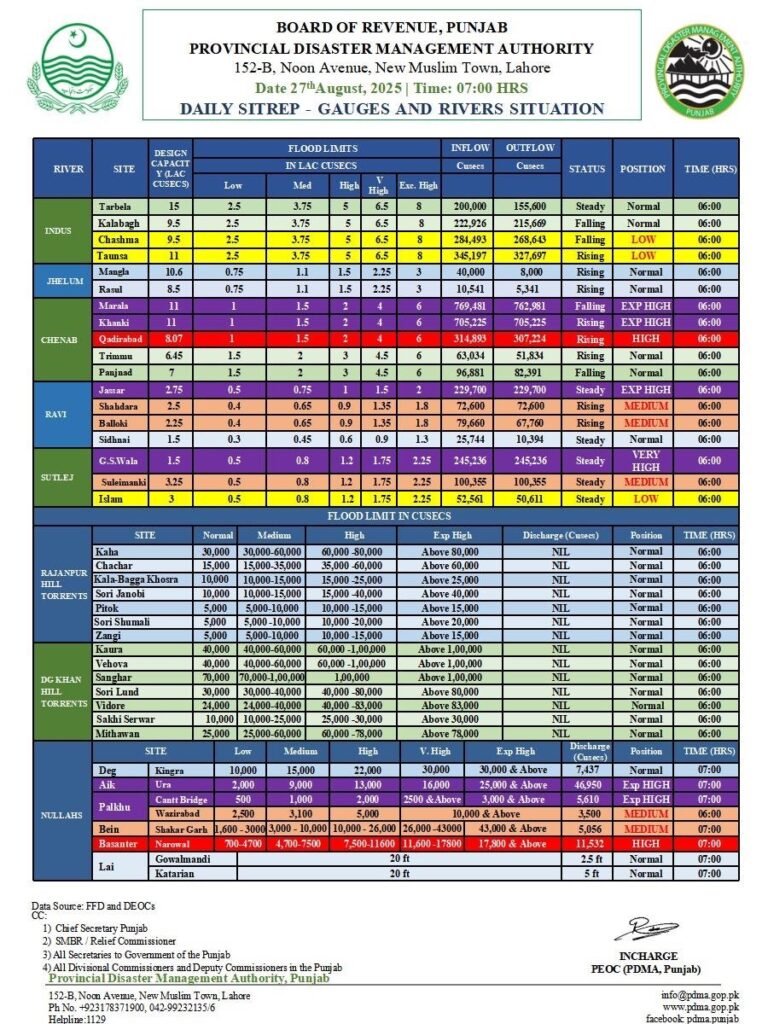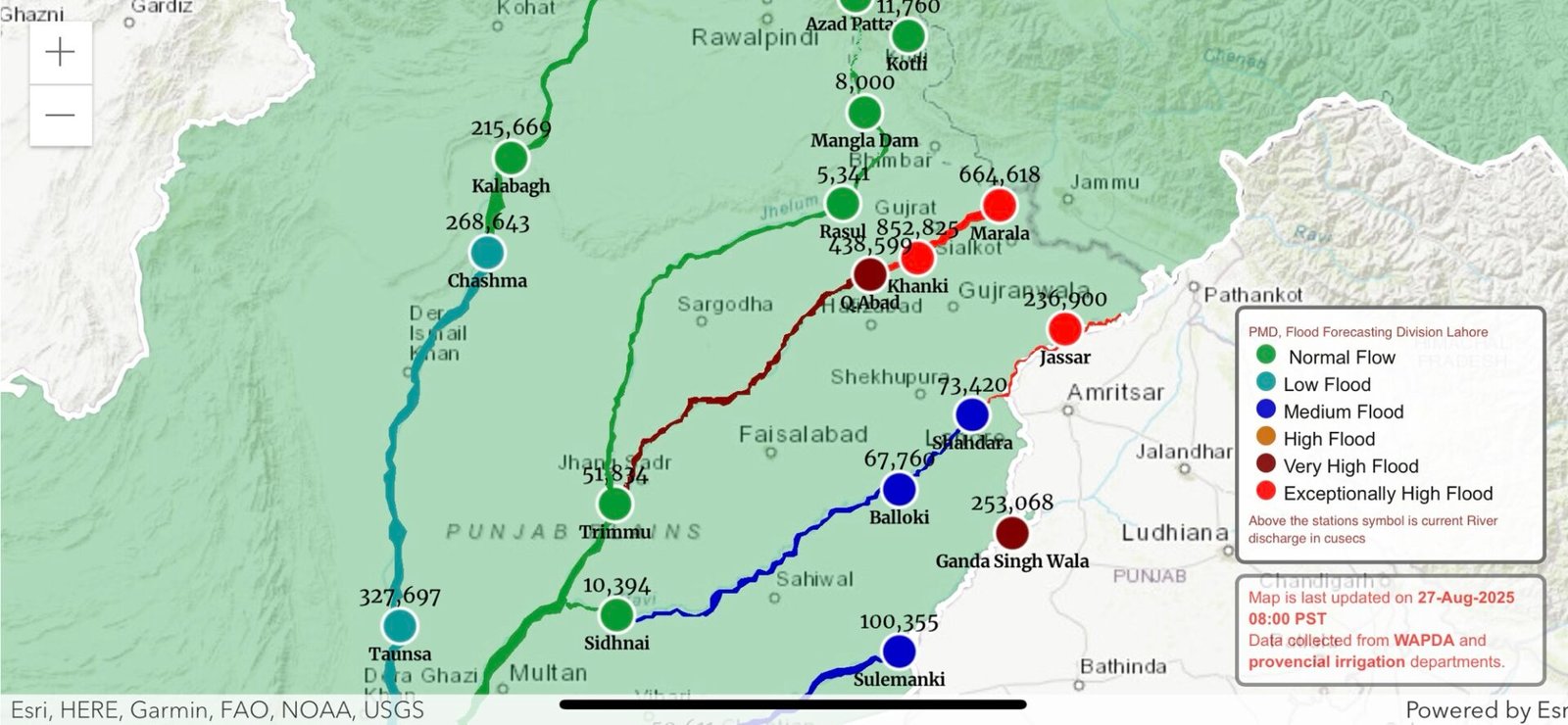LAHORE: Punjab province is facing one of its worst flood emergencies in years, as major rivers have already overflowed following relentless monsoon rains and India’s release of excess dam waters. Large swathes of central and eastern Punjab are inundated, with tens of thousands forced to flee their homes.
According to the Federal Flood Division (FFD) of the Pakistan Meteorological Department, the River Chenab at Khanki has swelled to an alarming 852,825 cusecs, while Marala is recording 664,618 cusecs, both categorised as “exceptionally high floods.” At Qadirabad, water flow has surged to 438,599 cusecs.
The Ravi River is also in crisis, with “very high flood” levels at Jassar reaching 236,900 cusecs, while Shahdara and Balloki headworks remain under moderate flooding. The Sutlej River has turned critical, with “very high flood” conditions at Ganda Singh Wala, while medium floods are reported at Head Sulemanki.
The Punjab government has urgently deployed army units to six badly-hit districts – Lahore, Kasur, Sialkot, Faisalabad, Narowal, and Okara – to support overstretched civil administrations. Troops are assisting with mass evacuations, food distribution, medical care, and the establishment of relief camps. Army Aviation has also been placed on standby to assist with air evacuations and relief drops.
Over 150,000 people have already been displaced across Punjab, with both forced and voluntary evacuations under way in hundreds of villages located along the Ravi, Sutlej, and Chenab rivers. Officials warn that more villages could be inundated in the coming hours as water levels continue to rise.
Relief camps have been set up in flood-stricken areas, offering food supplies, medicines, washrooms, and temporary shelter. “The flood situation is extremely grave, and saving human lives is our top priority,” said Punjab Irrigation Minister Kazim Raza Pirzada. He added that climate change is intensifying rainfall in eastern rivers, causing record-breaking inflows.
The National Disaster Management Authority (NDMA) has confirmed that Pakistan’s flood crisis has already claimed more than 800 lives since late June, with August alone accounting for nearly half the deaths. Meanwhile, in Indian-administered Kashmir, at least 68 people have died this month, underscoring the regional scale of the disaster.
Officials caution that further heavy rainfall is expected in Punjab and Pakistani Kashmir over the next 24 hours, raising the likelihood of worsening floods. “We are monitoring the situation 24/7 and all resources are being mobilised to protect lives and property,” a Punjab government spokesperson said.
Punjab, often called Pakistan’s breadbasket, is now battling not just rising waters but also fears of widespread crop losses, threatening food security in a province that sustains nearly half the country’s 240 million people.



